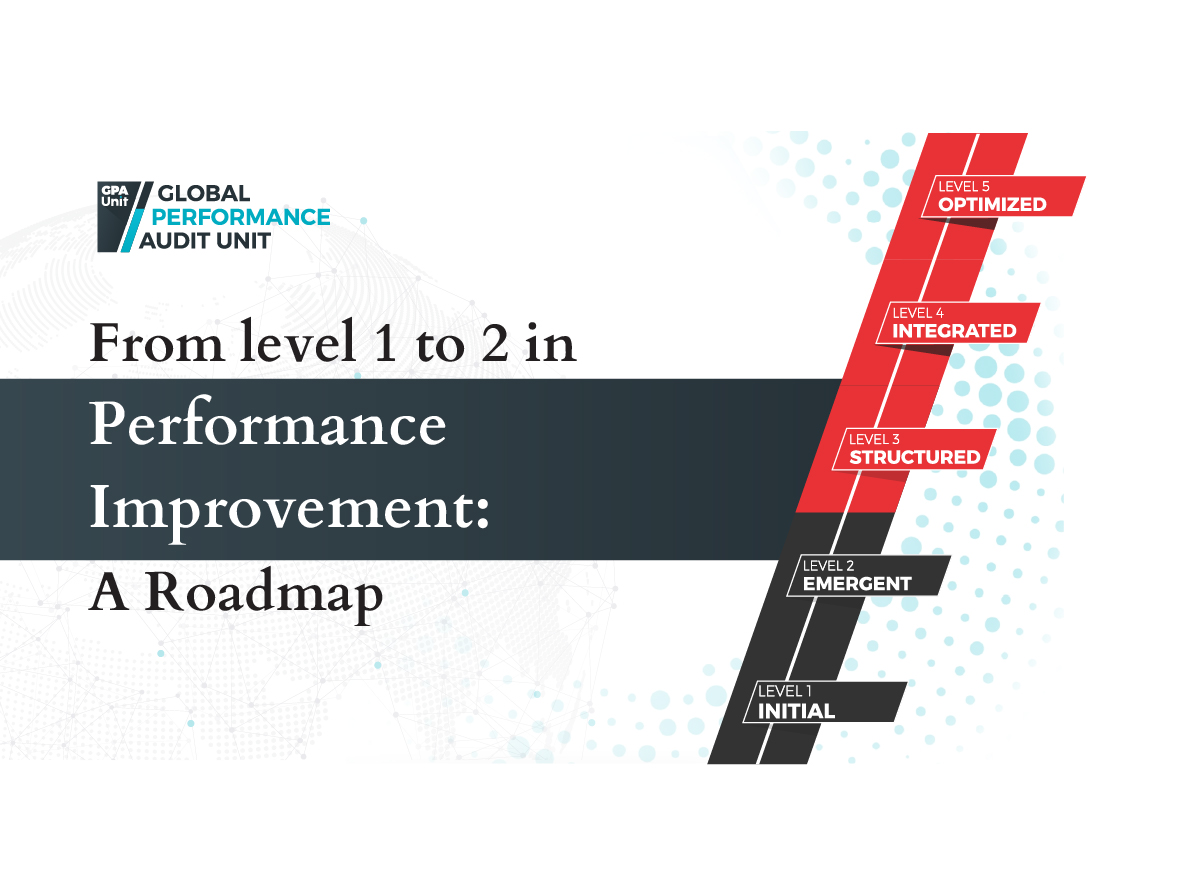More Than a Snapshot: How Often Should a Maturity Assessment Be Conducted?

A common misconception about maturity assessments is that they are one-time events—a box to be checked, a report to file away, or a score to be celebrated or lamented. In reality, nothing could be further from the truth.
While a single assessment offers a valuable snapshot of an organization’s current performance maturity, it does not capture the dynamic nature of public sector environments or the evolving challenges institutions face. At the Global Performance Audit Unit (GPA Unit), one of our foundational principles is continuous improvement—a journey, not a destination.
This article explores why organizations should treat maturity evaluations as a recurring commitment, and how doing so fosters momentum, clarity, and ultimately, organizational excellence.
Reason 1: There’s Always Room for Upward Movement
Regardless of whether your organization scored a Level 1 or a Level 4, the principle stands: there’s always room to grow.
Think of it like a math exam. A low score calls for tutoring; a high score might place you into an accelerated track. But in both cases, your future development depends on regular testing and feedback. Maturity assessments work the same way.
At GPAU, maturity evaluations are not just diagnostic—they’re prescriptive. Each level comes with clear recommendations tailored to your current capabilities. For instance, an organization moving from Level 1 to Level 2 in strategic planning starts formalizing its mission, vision, and values, and introduces basic performance indicators. This is a pivotal shift from reactive to structured thinking.
But without regular reassessment, it’s difficult to know if these early milestones have taken root—or whether it’s time to move to the next level, where integration, alignment, and measurement systems come into play. Progress isn’t linear or automatic; it’s intentional. And you can’t improve what you don’t periodically measure.
Reason 2: Frameworks and Best Practices Evolve
Today’s best practices won’t necessarily be tomorrow’s. That’s why performance management best practices—and the frameworks that assess them—are constantly evolving.
A Level 4 rating achieved two or three years ago might not hold up under current standards. New research, market pressures, and organizational trends influence what “good” looks like. If your evaluation criteria haven’t been refreshed, your performance management system be based on outdated assumptions.
Regular assessments help you stay aligned with:
In short, ongoing maturity assessments help your organization adapt its performance management systems in step with the world around it, avoiding stagnation and future-proofing your progress.

Reason 3: Building a Performance-Oriented Culture
One of the most powerful—but often overlooked—benefits of regular assessment is cultural.
When your organization commits to scheduled maturity reviews, you’re signaling that performance isn’t a one-off conversation—it’s a mindset. Just like students perform better when they know their progress will be evaluated consistently, teams grow when they’re regularly invited to reflect, improve, and align their work with shared goals.
By building maturity assessments into your rhythm of business, you help:
This is where performance management best practices meet culture: consistent evaluations support not just systems, but behaviors—and those behaviors are what drive organizational excellence.
Reason 4: Contextual Milestones Make Progress Real
Progress only has meaning when it's seen in context. Maturity levels are not just numbers—they represent concrete shifts in how your organization operates.
Consider the move from Level 1 to Level 2 in strategic planning maturity. At Level 1, goals are often vague, strategy is informal, and decision-making is reactive. Level 2 organizations begin to document their strategic direction, align team priorities, and define early KPIs. This is a significant structural leap.
But the transition to Level 3 is a different challenge altogether. It requires deeper integration, alignment across departments, and stronger performance tracking of the objectives. Without an updated maturity assessment, your organization might misdiagnose its readiness—or worse, implement solutions that don’t match your current capability. If you don’t have KPIs associated with all your objectives, predictive analytics might not be your biggest problem.
Regular assessments allow you to:
This kind of real-time insight doesn’t just drive better decisions—it sustains long-term excellence.
Conclusion: From Score to Strategy
Treating a maturity assessment as a one-off activity is like checking your weight once a year and expecting fitness to follow. The real power of assessment lies in its rhythm.
Here’s why organizations that conduct maturity assessments regularly outperform those that don’t:
GPAU’s approach is rooted in continuous improvement, and that means embracing maturity assessments as a strategic tool—not a formality.
Whether your organization is laying its first strategic foundation or optimizing at the highest level, regular evaluations are the checkpoints that keep your journey on course. Done consistently, they don’t just improve performance systems—they cultivate the habits, clarity, and leadership mindset that define organizational excellence.
| DATE | May 09th, 2025 |
| Category | Blog Posts |
| Reading Time | 6 |




